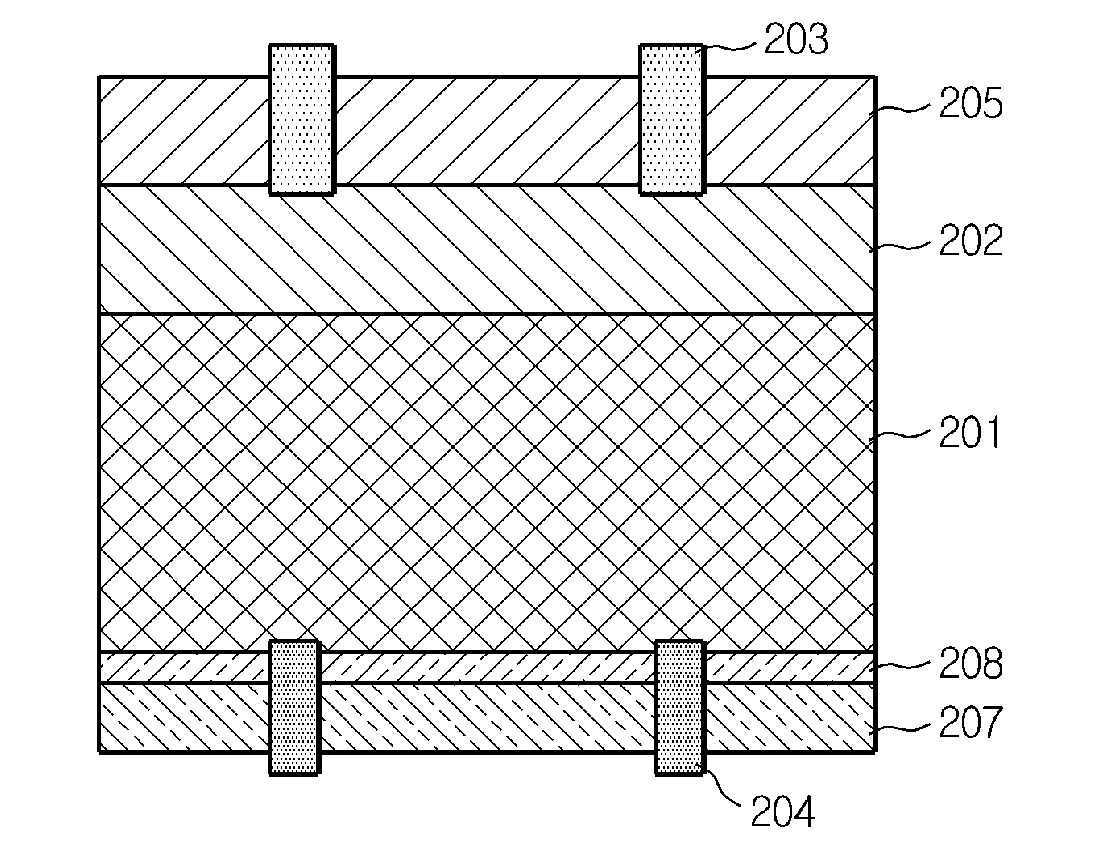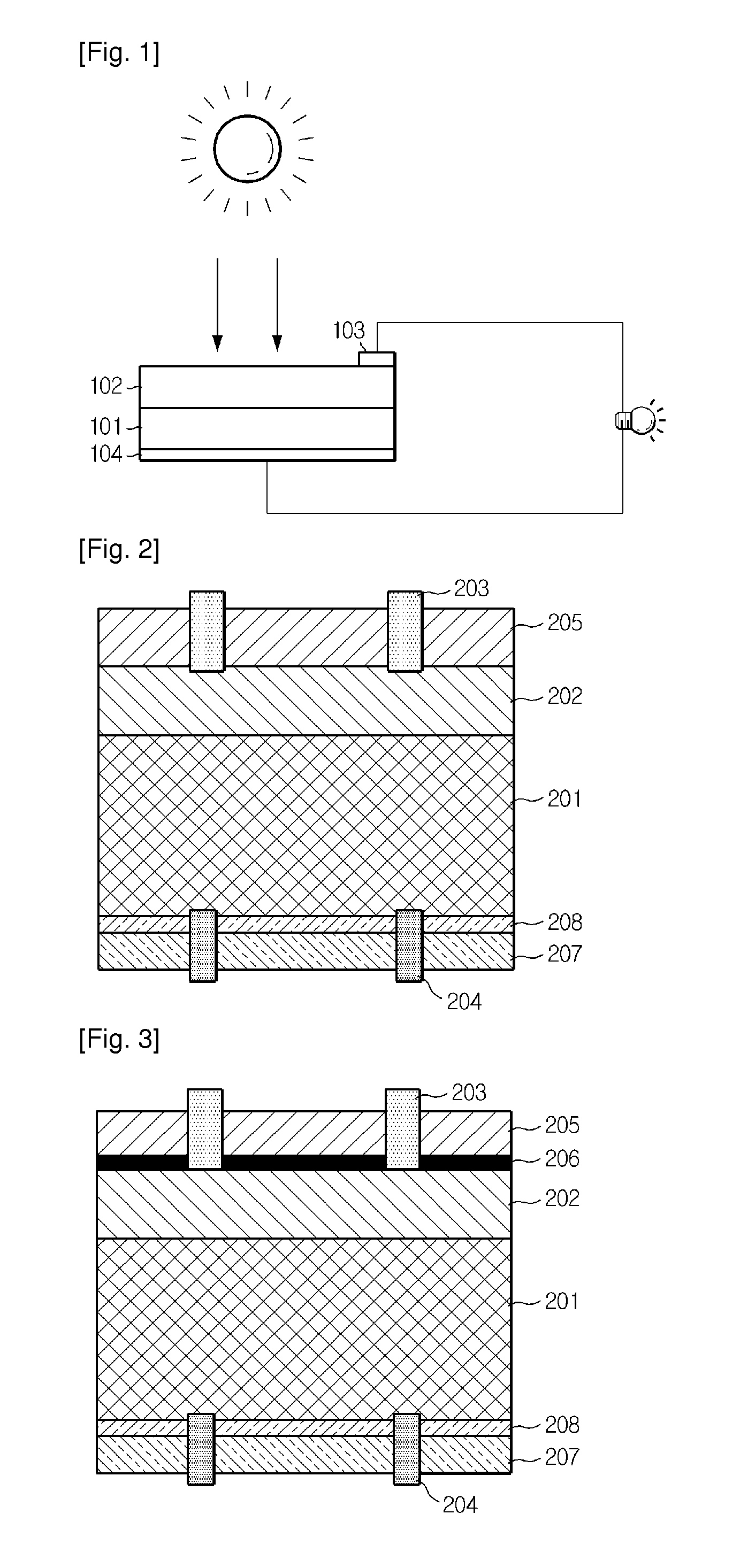Solar cell including backside reflection layer composed of high-k dielectrics
a solar cell and backside reflection technology, applied in the field of solar cells, can solve the problems of increasing the limit reducing and not having excellent reflectivity of conventional reflection layer, so as to achieve excellent optical trapping of solar rays and reduce the recombination of backside carriers
- Summary
- Abstract
- Description
- Claims
- Application Information
AI Technical Summary
Benefits of technology
Problems solved by technology
Method used
Image
Examples
Embodiment Construction
[0013]Hereinafter, preferred embodiments of the present invention will be described in detail with reference to the accompanying drawings.
[0014]FIG. 2 is a schematic view showing a solar cell according to a first embodiment of the present invention. As shown in FIG. 2, the solar cell according to the present invention includes a p-n junction structure, an anti-reflection layer 205, a front electrode 203, a rear electrode 204, a reflection film 207 and a backside passivation layer 208.
[0015]The p-n junction structure includes a first conductive silicon layer 201, a second conductive silicon layer 202 having a conduction opposite to the first conductive silicon layer 201, and a p-n junction formed at an interface between the first and second conductive silicon layers 201, 202. The p-n junction structure receives light to generate electric current by means of a photovoltaic effect. The p-n junction structure is made by forming, on the first conductive silicon layer, the second conducti...
PUM
 Login to View More
Login to View More Abstract
Description
Claims
Application Information
 Login to View More
Login to View More - R&D
- Intellectual Property
- Life Sciences
- Materials
- Tech Scout
- Unparalleled Data Quality
- Higher Quality Content
- 60% Fewer Hallucinations
Browse by: Latest US Patents, China's latest patents, Technical Efficacy Thesaurus, Application Domain, Technology Topic, Popular Technical Reports.
© 2025 PatSnap. All rights reserved.Legal|Privacy policy|Modern Slavery Act Transparency Statement|Sitemap|About US| Contact US: help@patsnap.com


